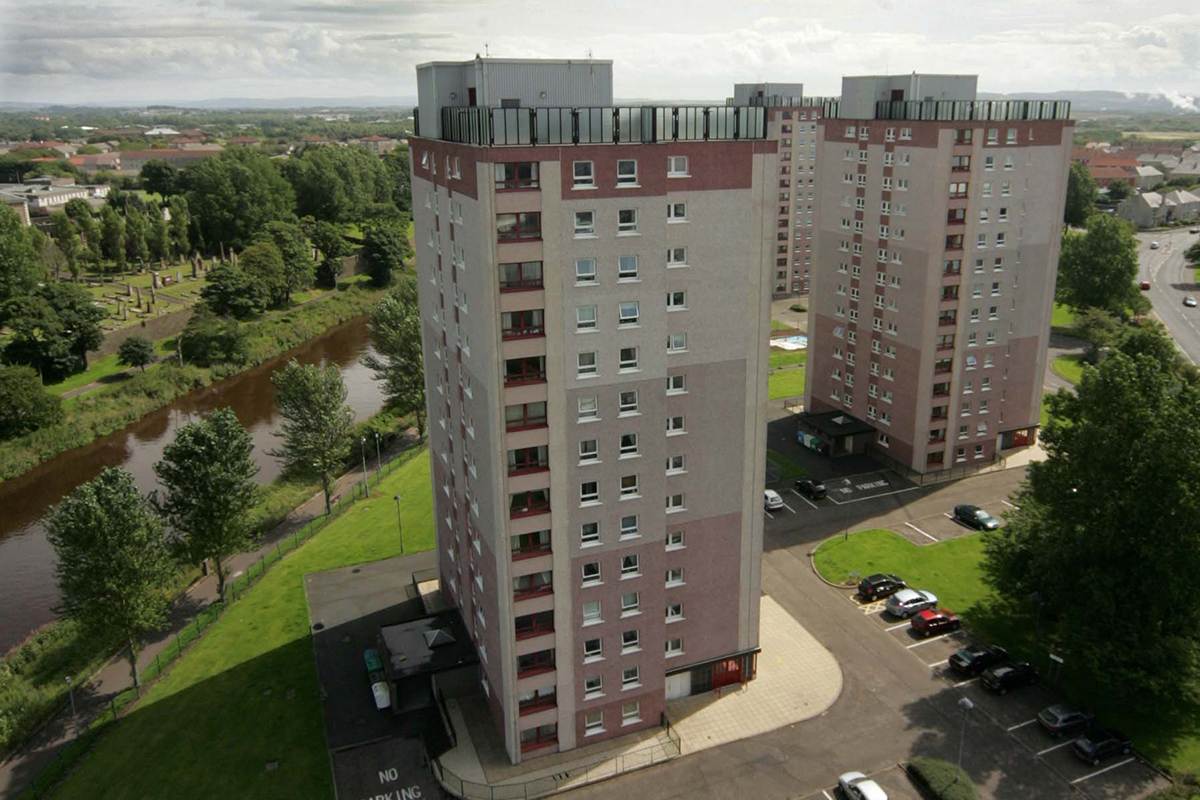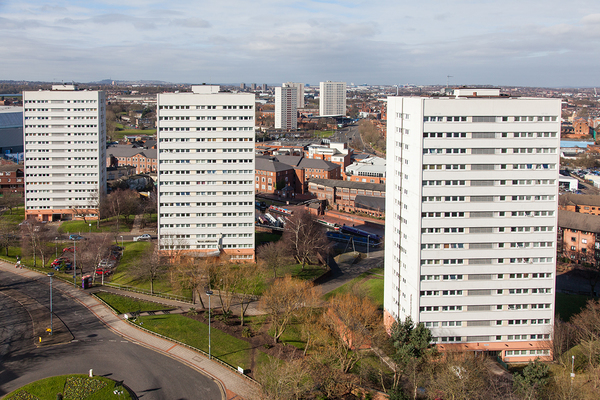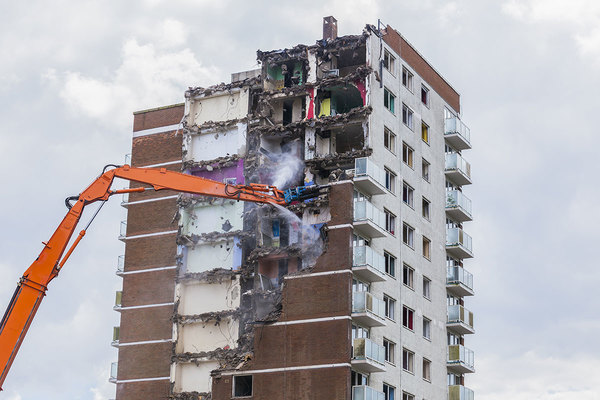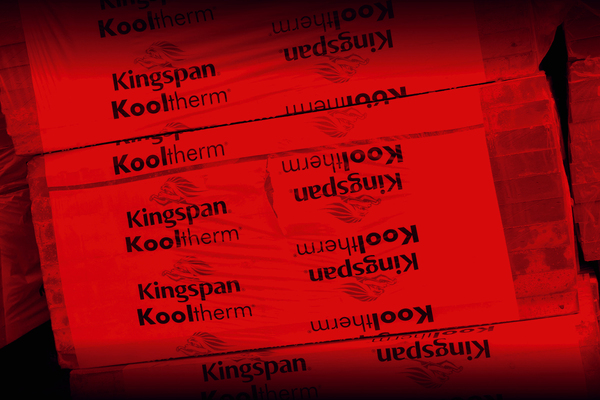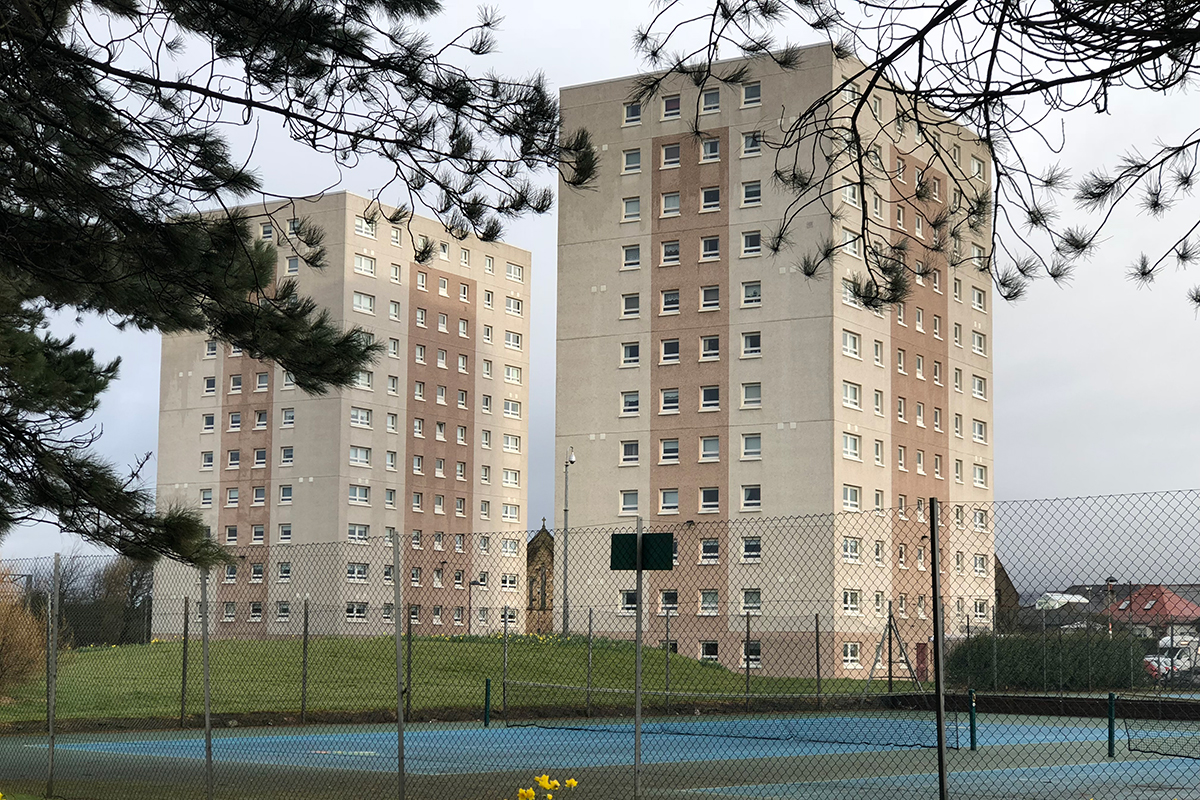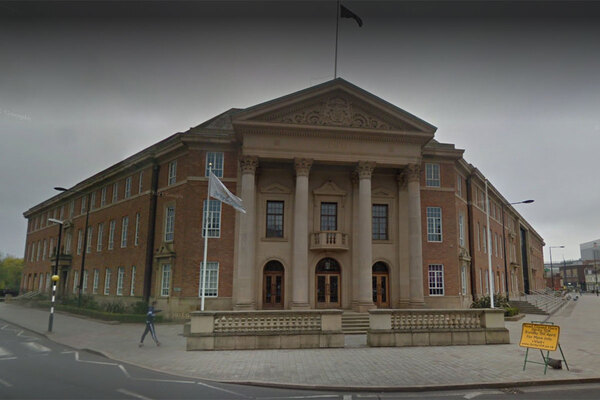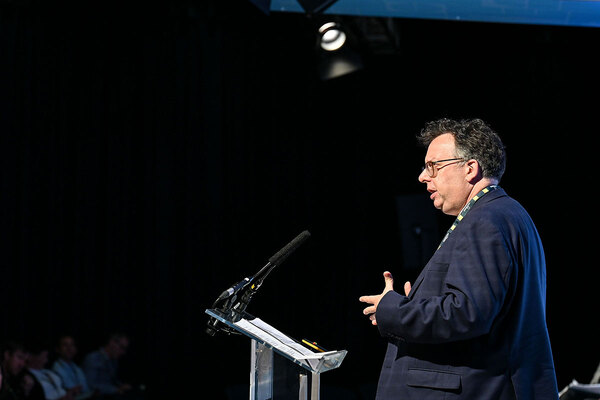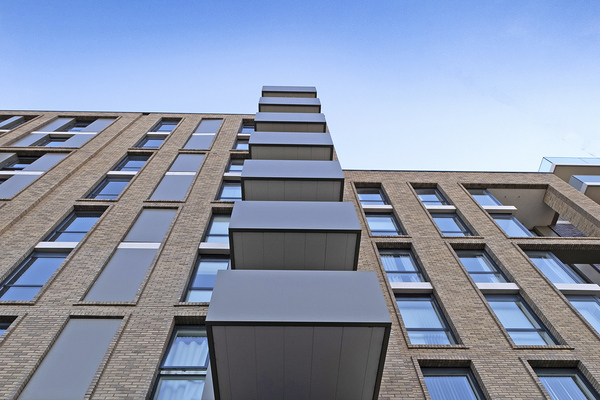You are viewing 1 of your 1 free articles
Demolition decisions: the council that may knock down all its high rises
Following the Grenfell Tower tragedy, UK councils have been looking at fire safety options. Jill Stevenson investigates one council which is considering tearing down all seven of its blocks.
13-storey tower blocks in Irvine, North Ayrshire
When Anna Martin moved into her smart new home on the 13th floor of Annick Court in Irvine, North Ayrshire, with her toddler son Ian, the miniskirt was everywhere, Ted Heath was prime minister and, across the Atlantic, cult leader Charles Manson had just been convicted. The year was 1971 and the future suddenly seemed so much brighter for the single mum.
“I’d been living with my mum and dad up to that point and I’d have taken anywhere decent to get a place of my own. But I was delighted to get the high-rise flats. In fact I couldn’t believe my luck. Everyone wanted to move in here when they first went up,” says Ms Martin, who is now 80.
“Way back then I loved having a home here, and I still do. That’s why I don’t want to leave. Well, that and because all my memories are here.”
“It was the Grenfell tragedy that focused the attention of council bosses”
Forty-seven years after she moved in, Ms Martin’s home is one of 369 flats in North Ayrshire which could potentially face demolition.
Erected in the late 1960s, North Ayrshire Council states that the five 13-storey-high tower blocks in Irvine – Annick, Afton, Doon, Garnock and Lugton Courts – and a further two similar blocks in the seaside resort of Saltcoats, will require £12.3m capital investment during the next 25 years.
It was the Grenfell tragedy that focused the attention of council bosses after they decided to look at installing sprinklers in the blocks as a result.
The costs of this, coupled with ongoing upkeep, prompted them to consider tearing down all seven blocks and rehousing the residents in modern, low-rise accommodation.
This is despite the Ayrshire flats having pebbledash on their exterior – rather than cladding.
The Irvine and Saltcoats blocks did have coloured panelling on their exterior in the past but that was removed more than a decade ago.
This week, housing officers on behalf of North Ayrshire Council’s tenant participation team, began knocking on every front door in the flats to find out how residents felt about the possibility of their homes being razed to the ground.
Most of the tenants will be interviewed on a one-to-one basis within the first fortnight but the housing team will be looking to speak to those who miss their visit because, say bosses, they are keen to engage as many tenants as possible in what will prove to be a major – and expensive – decision.
“No decision will be taken until councillors hear the results of the consultation report this summer.”
The housing visits mark the start of a consultation programme which offers the choice of three options for householders – one of which is to place a state-of-the-art sprinkler system, along with regular maintenance, in all the blocks at a cost of £22.5m across 25 years (£2.8m of which relates to the sprinklers).
The second option is to demolish all seven blocks and replace them with low-rise housing on the existing site and elsewhere in Irvine. This would be at a net cost of £22.1m, with all homes timetabled for completion by 2023.
The third option is to tear down the Irvine flats (where all the residents are social housing tenants) and keep the two Saltcoats blocks (where around one-third of flats are privately owned – some rented out – and which could delay proceedings and cause complications). The anticipated net cost is £14.4m.
No decision will be taken until councillors hear the results of the consultation report this summer.
At its annual budget meeting in March 2018, the council agreed a housing revenue budget of £48m and a total housing capital investment programme of £53m. It says housing is a key priority, with plans to build
a further 1,000 new homes during the next four years.
Council leader Joe Cullinane is keen to stress that discussions with the high-rise tenants will form a major part of the engagement exercise to decide on the future of the high-rise flats.
“Our residents are at the heart of these proposals and we are keen to find out their thoughts and answer any questions they may have. I believe this is a fantastic opportunity to change people’s lives for the better and transform both the Fullarton and Saltcoats communities,” he says.
Whatever option is chosen, he insists it will be fully funded from council house rental income and have no impact whatsoever on the council’s wider budgets.
Certainly there are some residents who are concerned about fire safety following Grenfell – and are supportive of demolition.
Jack McInnes, 24, who lives in the Garnock Court block, only moved into his flat three months ago. He’s in favour of seeing the flats come down.
“It’s to do with safety,” he says. “There are only two fire exits for more than 50 flats. I looked out my window one day last week and saw four fire engines at one of the other blocks.”
David English, 35, who lives in the same block as Mr McInnes, says fire engines are a common sight at the flats.
“There are always fire engines and ambulances around here, because if the smoke alarm goes off in any of the flats and when the concierge rings to see if you’re OK and you don’t pick up immediately, then they send the fire engine round.
“The council talks about fitting sprinklers but where would they put them? It would have to be inside people’s homes because that’s where most fires start. I asked them this at a meeting not that long ago but no one could give me an answer,” he says.
Mr English adds that the council put up posters in the flats at Christmas to reassure residents of their safety. Two weeks ago they installed a new fire alarm box at the entrances. But he doesn’t like the metal grills with two padlocks covering the windows in the stair landing.
“I would like to move,” he said. “But I know a lot of the older people who live here don’t. They feel safe thanks to the 24-hour concierge, knowing that they can always ring for help and that someone will answer. A lot of the older folks can’t get out and about.”
Tommy McGhee, 56, lives on the 13th floor at Lugton Court with his disabled brother. He likes the views and doesn’t mind if the council decides to fit sprinklers. But he knows his brother feels differently and that he would love a garden.
“He’s voting for the flats to come down,” he says. “Provided he can come back to the Fullarton area, that is. It’s all he’s ever known really.”
Click here to read our exclusive investigation into building regulations
Other residents are more strongly opposed. Joe (who wouldn’t give his surname), 53, who lives on the third floor of Lugton Court, is a vehement ‘non-mover’ and for him safety is about more than the threat of fire.
“It’s the quiet I like here, as well as the safety. There’s only one way into these flats, and that’s via the front door. I wouldn’t feel so safe in a house with two doors and ground-floor windows.”
“I’ll be barricading myself in when they come to move me,” he says.
“I don’t want to move. I really like living here. I’ve just done my spare room up and paid a fortune on new wallpaper for it. That will have been a waste if we have to move.”
The news of demolition came as a shock to many residents because the homes in the Irvine high-rise tower blocks have recently had replacement windows installed and others are about to be fitted with new bathrooms.
Ms Martin and her husband Anthony, 75, are among those to have benefitted.
She adds: “One of my neighbours was having a new bathroom fitted just the other day and we got one two years ago. The council also gave us a new heater not long ago. What’s the point of the new bathrooms and heaters if they’re just going to knock the flats down?
“Another reason I want to stay here is because I have a heart condition. Being aged 80, I don’t know if I’ll still be around in five years and if I am I can’t imagine what all the upheaval would be like.”
Mr Martin adds: “I suppose it would be nice to have something new but there are a lot of feelings and emotions around at the prospect of tearing these flats down – especially among older people, such as my wife, who have lived here for decades.
“Personally, I’m just wondering where they’re going to put everybody.”
--
Never Again campaign
Inside Housing has launched a campaign to improve fire safety following the Grenfell Tower fire
Never Again: campaign asks
Inside Housing is calling for immediate action to implement the learning from the Lakanal House fire, and a commitment to act – without delay – on learning from the Grenfell Tower tragedy as it becomes available.
LANDLORDS
- Take immediate action to check cladding and external panels on tower blocks and take prompt, appropriate action to remedy any problems
- Update risk assessments using an appropriate, qualified expert.
- Commit to renewing assessments annually and after major repair or cladding work is carried out
- Review and update evacuation policies and ‘stay put’ advice in light of risk assessments, and communicate clearly to residents
GOVERNMENT
- Provide urgent advice on the installation and upkeep of external insulation
- Update and clarify building regulations immediately – with a commitment to update if additional learning emerges at a later date from the Grenfell inquiry
- Fund the retrofitting of sprinkler systems in all tower blocks across the UK (except where there are specific structural reasons not to do so)
We will submit evidence from our research to the Grenfell public inquiry.
The inquiry should look at why opportunities to implement learning that could have prevented the fire were missed, in order to ensure similar opportunities are acted on in the future.
